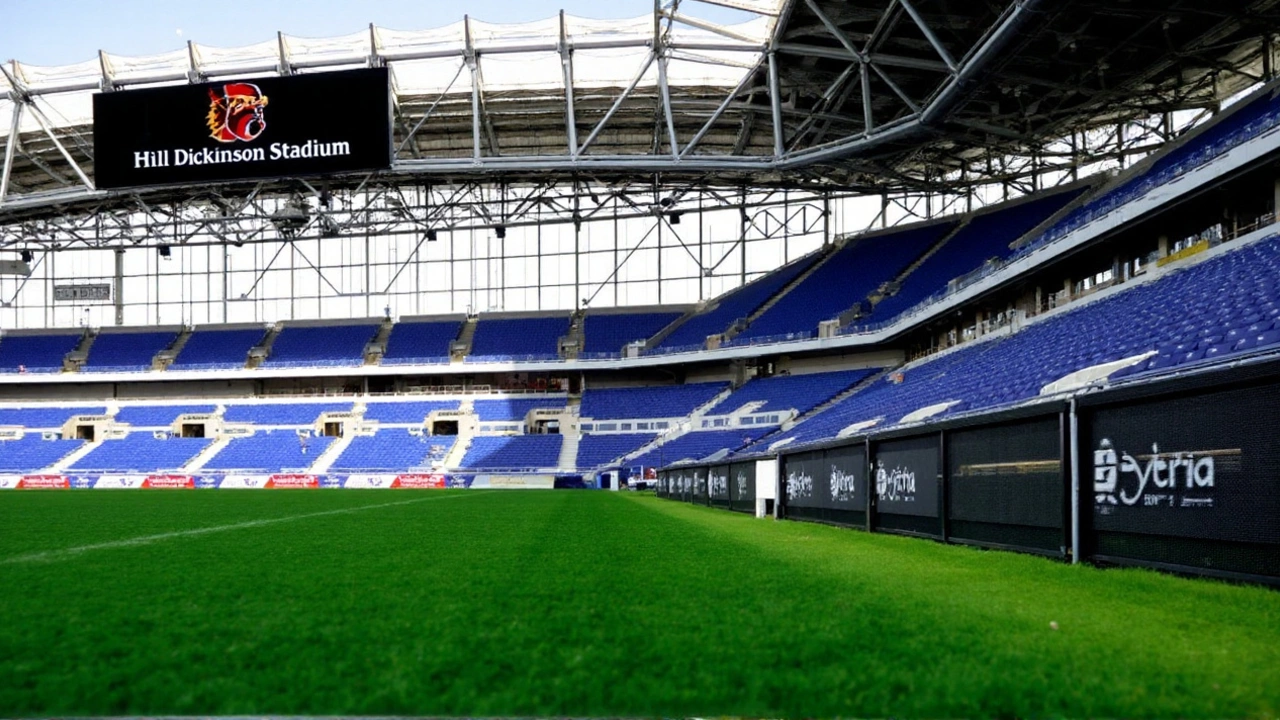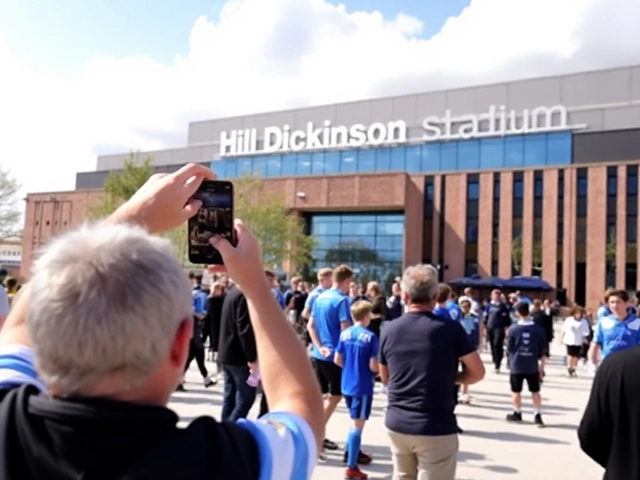Hill Dickinson Stadium bets big on connectivity: free WiFi, 5G DAS and an app-driven matchday
Hill Dickinson Stadium puts connectivity at the heart of matchday
Everton is treating connectivity as a core part of the matchday, not a nice-to-have. At the first full-house test against AS Roma, with 52,769 in the stands, the club switched on a new stadium-wide network built with HPE Aruba and a 4G/5G Distributed Antenna System (DAS) that covers EE, O2 and Vodafone. Engineers were on site watching live performance and tuning the setup in real time ahead of the 2025/26 Premier League season.
The aim is simple: no more dead zones, no more spinning wheels while you try to load a ticket or pay for food. Supporters can jump onto the free SSID, "Everton Free Wifi," or stick with their mobile network through the DAS. Both options are designed to work side by side so fans get a strong signal whether they are on the concourse, in the club store, in premium areas, or in their seats.
The footprint is broad, too. Coverage extends across the stadium bowl and into the surrounding site, including the Fan Plaza and Western Wharf. That means pre-match photos, last-minute ticket transfers, or a quick check of team news should work as you move toward the turnstiles and into the ground.
For anyone not steeped in telecom jargon, a DAS is a network of small antennas placed around the venue to boost mobile coverage in spots where big crowds usually overwhelm a normal cell tower. In practical terms, it spreads the load, so 4G and 5G connections stay stable when thousands of phones light up at once—like at kickoff or halftime. It’s the behind-the-scenes kit that stops your group chat from stalling when the teams walk out.
Everton’s technology lead, Phil Davies, has been clear about the problem they’re solving: big stadiums tend to choke under heavy demand, and Goodison Park has felt that pain. The new design is built to avoid those bottlenecks and give fans a consistent connection throughout the day.
This infrastructure underpins how matchdays are shifting. Digital ticketing depends on a fast, reliable signal. So do contactless payments at kiosks, live updates on queue times, and push notifications for real-time offers. The club says its app will tie these pieces together, speeding up service at digital touchpoints and cutting down the time fans spend waiting.
The WiFi network, delivered with HPE Aruba, is tuned for dense crowds and constant movement. During the Roma friendly, technicians monitored traffic patterns—think halftime surges to the concourse—and adjusted settings so roaming between access points feels seamless. The goal is to keep the experience steady when demand spikes, not just when the stadium is half full on a rainy Tuesday.
None of this happens by accident. Stadium WiFi has to manage thousands of devices per block, juggle streaming, social uploads, and payments, and do it all without dropping essential services like digital tickets. A well-designed DAS adds a second path, so fans who prefer mobile data don’t pay a performance penalty, and those who switch to WiFi get a reliable alternative.
What will fans notice first? Faster entry through turnstiles as QR codes load instantly. Quicker transactions at bars and food stands. Club app prompts that land on time, not five minutes too late. And yes, fewer desperate walks to the concourse hoping for a signal.
The connectivity plan also helps beyond matchdays. A robust network supports stadium operations, from staff communications to dynamic digital signage. For future events—family days, live screenings, even non-football fixtures—the same platform should handle the load without major rewiring.
There’s a business angle, too. With consent, app-driven services can personalize offers and manage demand more intelligently. If a stand is busy, the club can nudge fans toward a quieter kiosk nearby. If a section is filling up, operations can deploy staff faster. That feedback loop only works when the network is strong and the app is connected.
Security and privacy matter in all of this. Public WiFi is convenient, but fans should still use common sense: keep software updated, avoid sensitive logins over public networks when possible, and stick to the official SSID. The same goes for mobile—if you lose bars during a surge, try toggling WiFi and mobile data to see which path performs best in that moment.
The first dress rehearsal suggests Everton is leaning into this as a long-term commitment rather than a one-off install. With the systems now live, the club can keep tuning capacity for choke points—halftime, full-time, and those moments right after a goal when everyone hits their phones at once—so the network stands up when it’s under the most pressure.
For supporters who have wrestled with weak signals at older grounds, this is a welcome shift. The new waterfront stadium was always going to be judged on atmosphere and sightlines. Now it will be judged on something more modern: can your phone actually keep up with your day? Everton is betting the answer at Hill Dickinson Stadium will be yes.
What to know on matchday
Here’s a quick checklist to make the most of the setup from day one.
- Find and join "Everton Free Wifi" around the concourses, club store, premium spaces, and your seat. If WiFi is crowded, try your mobile network—the DAS boosts EE, O2, and Vodafone across 4G and 5G.
- Open your digital ticket before you reach the turnstile. Keep your screen brightness up for easier scanning.
- Use the club app for service updates and real-time offers. Expect the biggest demand spikes at halftime; the network is tuned to handle them, but preloading helps.
- For payments, keep a backup method ready (phone wallet and a card), just in case your battery gets low late in the game.
- If you’re meeting friends, pick a landmark rather than relying only on calls. Messages should go through, but physical meet points are still foolproof in big crowds.
The club plans to keep refining the network after each major event. More tests, more data, and more tweaks should mean a smoother experience as the Premier League season approaches. The endgame is a connected stadium where the technology fades into the background—and the football takes center stage.





